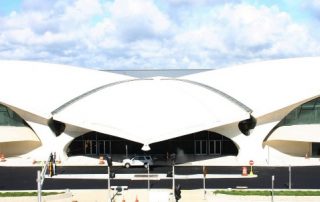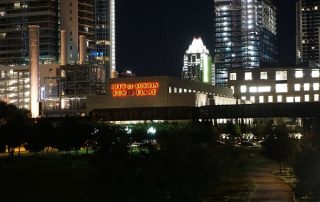Information on adaptive reuse of buildings for new purposes
Adaptive Reuse: TWA Flight Center – Jet-Age Icon Preserved
Adaptive reuse has helped New York reclaim and transform one of its iconic buildings. Trans World Airlines (TWA) may be no more, but part of the terminal that superstar architect Eero Saarinen designed for the company remains a travel hub, now as a hotel. When the TWA Flight Center at New York’s John F. Kennedy






